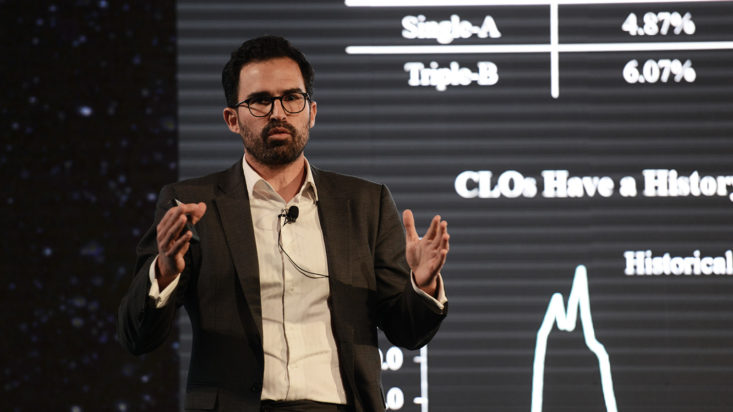Benign risk of default drives credit opportunity
History has shown that investing into bank loans and credit markets at or near current valuation levels has delivered high single digit and double digit returns over the long-term. These were the comments of Teiki Benveniste, Head of Ares Australia Management, when presenting to leading advisers and consultants during The Inside Network’s Income and Defensive Assets Symposium.
After a challenging period for fixed income and equity investors alike, Benveniste offered insight into what he sees as the “sweet spot of credit”. That is the unique characteristics of many parts of the lesser known credit sector that offer great opportunities for both relative value and absolute return investors.
With investors tiring of volatility across portfolios, he highlighted the unique proposition of diversified credit exposures with have delivered “similar levels of returns as growth assets, but with lower volatility”. These returns have been “anchored in high levels of current income” he explained.
Naturally, with some bank and high yield loans now offering income nearing or above 10 per cent on a forward-looking income basis, the question is “what’s the catch?”. That is, why are you being paid high amounts of income for seemingly low risk fixed income assets? The answer explains Benveniste is “credit risk”, that is you are being paid to take on the risk of default from these issuers.
While much of the attention is being paid to the ‘marking to market’ of fixed income and credit in the first half of 2022, which has seen some 60 per cent of high yield bond issues trading around 90 cents in the dollar, the only real risk of loss is when an issuer defaults. “The risk of default is benign” according to Ares, with the corporate sector in rude health after years of strong earnings and government support. The result is that interest cover ratios, reflecting the ability of a company to repay, remain near the highest they have been, and the threat of a maturity wall is more limited.
Add to this the fact that historical default rates in the senior secured and similar loan sectors sits at just 2.3 per cent per annum, including the GFC, and it is clear the opportunities emerging in the sector. That said, as in any strategy, Ares is “absolutely focused on downside protection and avoiding mistakes” noting that patience is key, holding to maturity is under appreciated and that relative value opportunities across the capital stack have rarely been greater.
The complexity of the fixed income and credit market has kept investors out for many years, which Benveniste acknowledged and sought to explain the maligned CLO or Collateralised Loan Obligation sector. Often compared to the CDO’s which ultimately contributed to the GFC, CLOs are simply “closed-end managed funds” holding a diverse pool of predominantly senior secured corporate loans and in Benveniste’s view a unique way to find diversification.
After a quarter dominated by duration risk, attention has quickly switched to credit risk with the market now “extremely negative” on the economic prospects, despite an attractive risk-reward profile.











